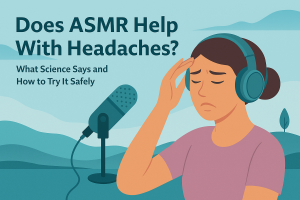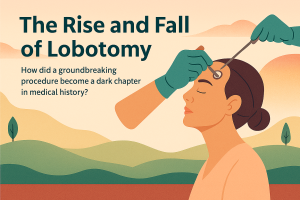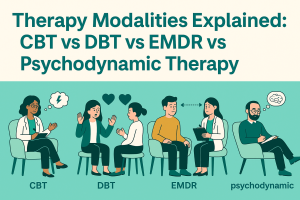Quick Answer: It's a Spectrum, Not One Code
The F32 diagnosis code category covers single episodes of depression, with specific codes indicating severity: F32.0 (Mild), F32.1 (Moderate), F32.2 (Severe without psychotic features), F32.3 (Severe with psychotic features), F32.4 (Partial remission), F32.5 (Full remission), F32.8 (Other specified), F32.9 (Unspecified), and F32.A (Depression, unspecified) .
After helping hundreds of mental health providers optimize their coding practices, I've found that F32 diagnosis codes present particular challenges that go beyond simple code selection. Many clinicians don't realize that using the parent code F32 alone is insufficient for billing purposes, and incorrect severity specification can lead to claim denials or inadequate patient care representation.
In this comprehensive guide, we'll not only explore the complete F32 diagnosis code spectrum but also provide clinical documentation strategies, coding pitfalls to avoid, and practical insights for implementing accurate billing practices that withstand auditor scrutiny. You'll learn how to accurately document symptom severity, differentiate between single and recurrent episodes, and select the most specific codes for your clinical presentations.
Complete F32 Diagnosis Code Spectrum for Single Depressive Episodes
Single depressive episodes are classified under ICD-10 category F32 (Depressive episode) within the broader "Mood [affective] disorders" chapter (F30-F39). Unlike the parent F32 code which cannot be used for reimbursement, the specific codes below F32 provide the detail needed for accurate billing and clinical documentation.
| ICD-10 Code | Severity Level | Symptom Requirements | Functional Impact | Clinical Notes |
|---|---|---|---|---|
| F32.0 | Mild Depressive Episode | 2 core symptoms + 2-3 additional symptoms | Some difficulty with work/social activities, but continues to function | Minimum duration: 2 weeks; PHQ-9 typically 5-14 |
| F32.1 | Moderate Depressive Episode | 2 core symptoms + 4+ additional symptoms [citation:3] | Considerable difficulty continuing social, work or domestic activities [citation:3] | Several symptoms typically marked; PHQ-9 typically 15-19 |
| F32.2 | Severe Without Psychotic Features | All 3 core symptoms + 4+ additional symptoms, some severe [citation:3] | Unable to continue social, work, or domestic activities except minimally [citation:3] | Somatic syndrome almost always present; PHQ-9 typically ≥20 |
| F32.3 | Severe With Psychotic Features | Meets F32.2 criteria + delusions, hallucinations, or depressive stupor [citation:3][citation:5] | Complete inability to manage daily activities without intervention [citation:5] | 32% higher denial rates; requires meticulous documentation |
| F32.4 | In Partial Remission | Previous episode now improving but criteria still partially met [citation:4] | Some lingering functional impairment | Used when patient is not yet asymptomatic [citation:4] |
| F32.5 | In Full Remission | No significant symptoms remain from previous episode | Minimal or no functional impairment | Patient may still require maintenance treatment |
| F32.8 | Other Depressive Episodes | Significant symptoms not meeting full criteria for other categories [citation:1] | Varies based on presentation | Includes F32.81 (Premenstrual dysphoric disorder) |
| F32.9 | Unspecified Major Depression | MDD symptoms present but severity not documented [citation:6] | Significant distress or impairment | PHQ-9 ≥10 without severity specification [citation:6] |
| F32.A | Depression, Unspecified | Mild/subthreshold symptoms not meeting full MDD criteria [citation:6] | Some distress or impairment | PHQ-9 typically 5-9; not meeting full DSM-5 criteria |
Critical Coding Distinction
F32.A (Depression, unspecified) should not be confused with F32.9 (Major depressive disorder, single episode, unspecified). F32.A applies to subthreshold depressive symptoms that don't meet full MDD criteria, while F32.9 is used when MDD is present but specific severity documentation is lacking [citation:6]. Using these incorrectly can lead to claim denials and clinical misrepresentation.
Core Diagnostic Criteria and Symptom Thresholds
Accurate coding requires understanding both the ICD-10 framework and DSM-5-TR criteria that U.S. clinicians use for diagnosis. The core symptoms of depression form the foundation for determining both diagnosis and severity level.
😔 Core Symptoms (Required)
Depressed mood most of the day, nearly every day, and/or markedly diminished interest or pleasure in all or almost all activities [citation:2][citation:4]. At least one of these must be present for diagnosis.
🔍 Additional Symptoms
Significant weight/appetite changes, sleep disturbance, psychomotor changes, fatigue, worthlessness/guilt, concentration difficulties, and suicidal ideation [citation:2][citation:4]. At least 5 total symptoms (including core symptoms) needed for MDD diagnosis.
⏱️ Duration & Impact
Symptoms must persist for at least 2 weeks and represent a change from previous functioning, causing clinically significant distress or impairment in important areas of functioning.
Documentation Requirements for Accurate F32 Coding
Proper documentation isn't just good clinical practice—it's essential for accurate coding and reimbursement. Based on current guidelines and audit requirements, your documentation should include these critical elements :
Symptom Inventory with Specific Examples
Document all symptoms present with specific examples and frequency. Avoid vague terms like "appears depressed" in favor of "patient reports crying daily, states 'I can't stop feeling hopeless,' PHQ-9 score: 18" .
Standardized Assessment Results
Include PHQ-9 scores and other relevant measures. For F32.3, consider adding PSYRATS (Psychotic Symptom Rating Scale) to quantify psychosis severity .
Functional Impact Description
Describe how symptoms affect work, relationships, and daily activities. Note specific limitations like "unable to complete work assignments" or "neglecting personal hygiene" .
Critical Differentiation: Single vs. Recurrent Episodes
One of the most important distinctions in depression coding is between single (F32) and recurrent (F33) episodes. This differentiation has significant implications for treatment planning and coding accuracy .
📌 F32 - Single Episode
Use F32 codes for the first episode of depression or when there's no documented history of previous episodes. The category includes mild, moderate, and severe presentations, with and without psychotic features .
🔄 F33 - Recurrent Episode
Use F33 codes when the patient has experienced two or more major depressive episodes with periods of remission lasting at least two months between episodes. The current episode's severity determines the specific code .
❓ Uncertain History
When episode history is unclear, document this uncertainty and use the most specific code supported by available information. When in doubt, F32 (single episode) is typically the default until recurrent pattern is established ].
Documentation Improvement Tip
Instead of "patient has depression," document: "Patient meets criteria for major depressive disorder, single episode, moderate (F32.1) based on PHQ-9 score of 17, with depressed mood, anhedonia, sleep disturbance, fatigue, and concentration difficulties lasting 3 weeks, causing significant work impairment." This specificity supports medical necessity and prevents audit triggers .
Exclusion Criteria and Differential Diagnosis
Proper F32 coding requires understanding what conditions are explicitly excluded from this category. These exclusion guidelines help ensure accurate differential diagnosis .
Type 1 Excludes (Cannot Co-occur)
Bipolar disorder (F31.-) - If there's history of manic or hypomanic episodes [citation:1][citation:8]
Manic episode (F30.-) - For current manic presentation [citation:1][citation:8]
Recurrent depressive disorder (F33.-) - For multiple depressive episodes
Type 2 Excludes (Can Co-occur)
Adjustment disorder (F43.2) - Can be coded with F32 if both conditions are present ]
F32.3 Special Considerations: Severe Depression with Psychotic Features
F32.3 (severe depressive episode with psychotic features) requires particular attention to documentation details, as claims with this code experience 32% higher denial rates compared to other mood disorder codes .
| Documentation Element | Required Details for F32.3 | Common Pitfalls to Avoid |
|---|---|---|
| Psychotic Symptom Description | Type (auditory/visual), frequency, specific content (e.g., "voices commanding self-harm") [citation:5] | Vague terms like "appears psychotic" without specific examples |
| Mood Congruence | Note whether psychotic features align with depressive themes (mood-congruent) | Failing to differentiate from primary psychotic disorders |
| Safety Assessment | Suicide risk assessment + crisis intervention protocols | Inadequate safety planning documentation |
| Functional Impact | Complete inability to manage daily activities without intervention [citation:5] | Contradictory indicators (e.g., "patient calm and cooperative") |
Optimize Your Depression Diagnosis Coding
Get expert guidance on complex coding scenarios, documentation improvement, and compliance requirements for depressive disorders and other behavioral health conditions.
Schedule a Coding ConsultationFrequently Asked Questions
What's the difference between F32.A and F32.9?
F32.A (Depression, unspecified) applies to mild or subthreshold depressive symptoms that don't meet full criteria for major depressive disorder (typically PHQ-9 scores 5-9). F32.9 (Major depressive disorder, single episode, unspecified) is used when MDD criteria are met but specific severity documentation is lacking (typically PHQ-9 ≥10). Using F32.A when F32.0-F32.3 is appropriate constitutes a coding error .
When should I use F32 vs. F33 codes?
Use F32 codes for the first episode of depression or when there's no documented history of previous episodes. Use F33 codes when the patient has experienced two or more major depressive episodes with periods of remission lasting at least two months between episodes. The current episode's severity determines the specific code within either category .
Can I bill using just the parent F32 code?
No. The parent F32 code is non-billable and should not be used for reimbursement purposes. You must use the more specific codes below F32 (F32.0, F32.1, F32.2, etc.) that contain a greater level of detail for billing and clinical documentation .
What are the documentation requirements for F32.3?
F32.3 requires documentation of both severe depressive symptoms meeting F32.2 criteria and psychotic features such as delusions, hallucinations, or depressive stupor. Specifically document: type of psychotic symptoms, frequency, content, mood congruence, and functional impact. Using structured templates and rating scales like PSYRATS can improve documentation quality .
How do I code depression with anxious distress?
Code the appropriate F32 code for the depressive episode and document "with anxious distress" as a specifier in your clinical notes. Anxious distress is not represented by a separate ICD-10 code but should be documented to support treatment planning and communicate clinical complexity .
Key Takeaways for Accurate F32 Coding
Accurate F32 diagnosis code selection requires understanding both the technical coding rules and the clinical nuances of depressive disorders. Remember these critical points for optimal coding practices:
Summary of Best Practices
Always use specific severity codes (F32.0-F32.5) rather than unspecified codes when clinical information supports them. Document both symptom count AND functional impact across multiple domains. Remember that F32 is for single episodes only—use F33 for recurrent presentations. Never use the parent F32 code for billing purposes, and maintain detailed documentation, especially for complex cases like F32.3 .
Selecting the appropriate F32 diagnosis code requires clinical judgment to choose the most specific code based on comprehensive assessment, not just symptom counts. By implementing the documentation practices and coding strategies outlined in this guide, you can ensure accurate representation of patient conditions while maintaining compliance and optimizing reimbursement.
TherapyDial Editorial Team
This guide was developed by the TherapyDial Editorial Team, which includes certified professional coders, clinical psychologists, and healthcare practice management specialists with combined decades of experience in behavioral health coding and documentation. Our team regularly monitors ICD-10 updates and clinical best practices to provide accurate, actionable guidance for healthcare providers.




